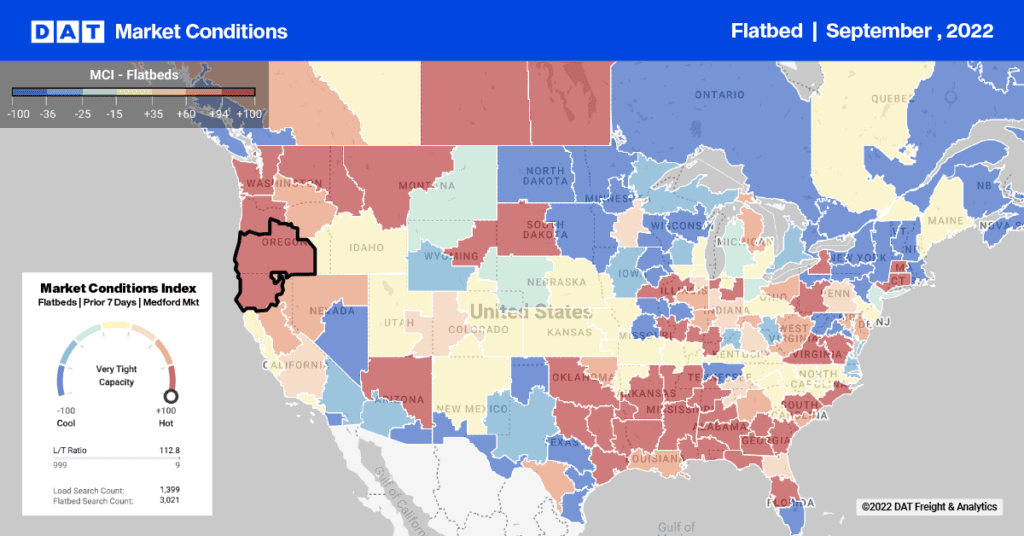To help you to negotiate the best price for your trucks, most DAT Load Boards include spot market rates for the lanes you’re searching. That rate is an example of what would be a typical price on that lane, which can help guide your negotiations. There still might be times when you call on a load and the broker quotes something that isn’t what you expected. This doesn’t mean that the number you saw in the load board is wrong.
Aside from the broker just trying to get a favorable price, here are three reasons why you might have been quoted a different rate:
1. Range of prices: The number you’re seeing in the load board is calculated based on a range of actual transactions for loads that have moved in that lane – some of those loads moved for more than that price, some for less. The range does not include the top 25% of the rates and the bottom 25%, which eliminates outliers and gives you the most accurate guide to the range of available rates on that lane.
.png)
If you’re using the DAT Power load board or our standalone freight rates tool, DAT RateView™, you can see the range of prices used to calculate that rate. You can use that information to try to negotiate for the top end of that range.
2. Range of dates: Another factor is the age of the information. The rate that you’re seeing in the load board is an average for the past 90 days. In RateView, you can narrow that down to a 7-day average. If you’re researching a lane where prices are volatile, the 7-day rate gives you a more precise look at today’s market prices. That said, the 90-day rate is still a good guide and might prove more useful when bidding on RFPs or other long-term, recurring business.
3. Geographic range: In the load boards, we calculate the rate based on what we call the “expanded market.” If you also have RateView, we can show an average rate for an entire region, or you can get access to rates in a geographic area defined by the first three digits of a zip code.

These maps show how the geographic area changes when researching rates in Los Angeles. Left to right: Region, Extended Market, Market, and 3-Digit Zip.
The example above for Los Angeles shows how drastically the geographic borders can change based on how you’re researching the rate. The 3-digit zip gives you most precise pricing information, but you may find that the expanded market gives you enough guidance when negotiating rates.
This is the first in a series of rate tutorials that we have planned for the blog, so check back regularly.


